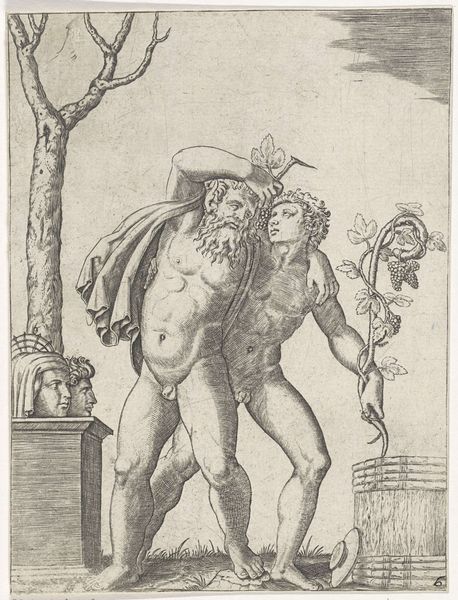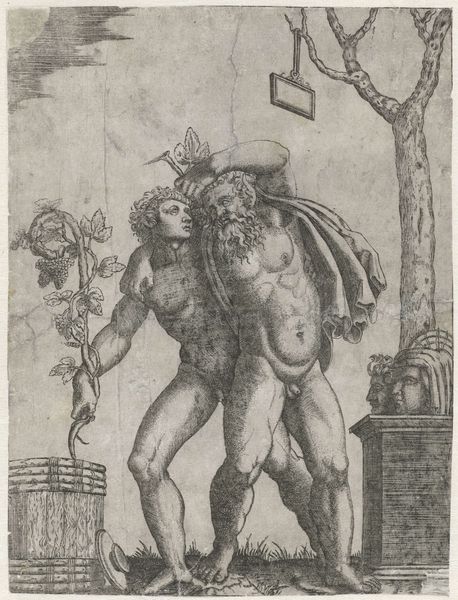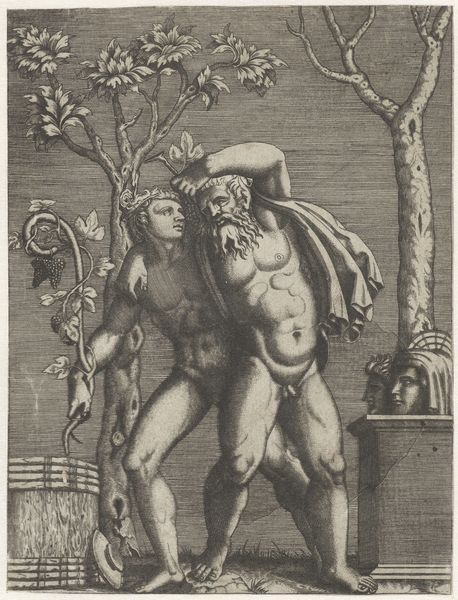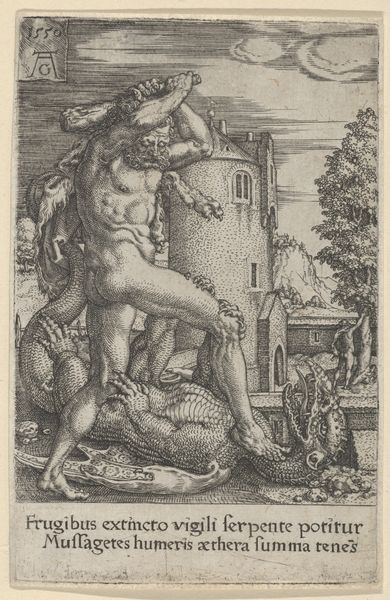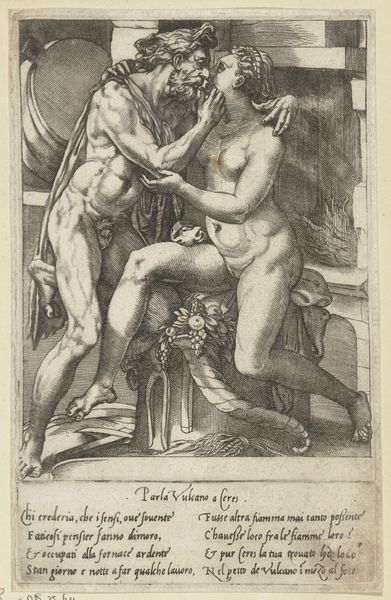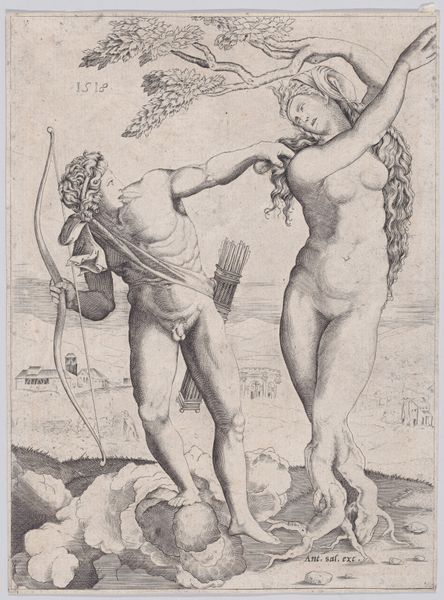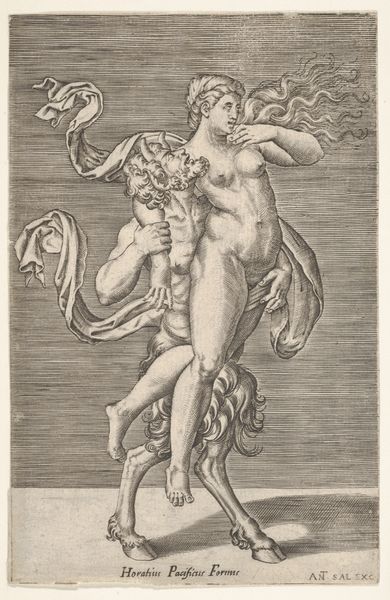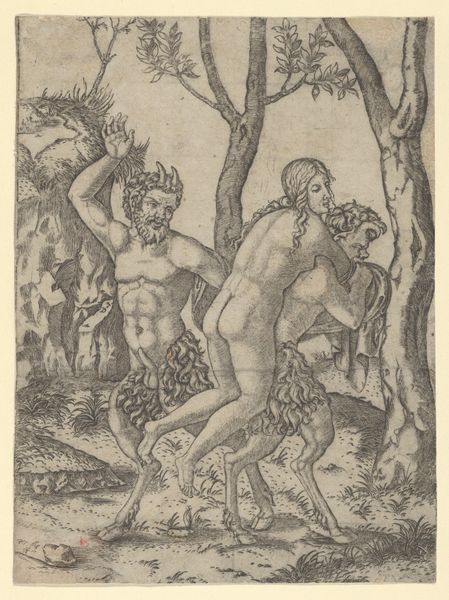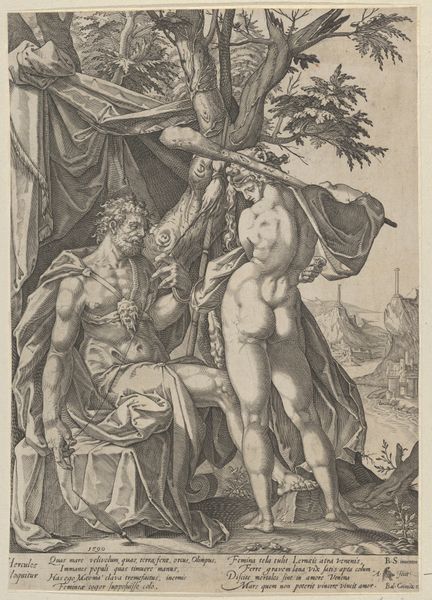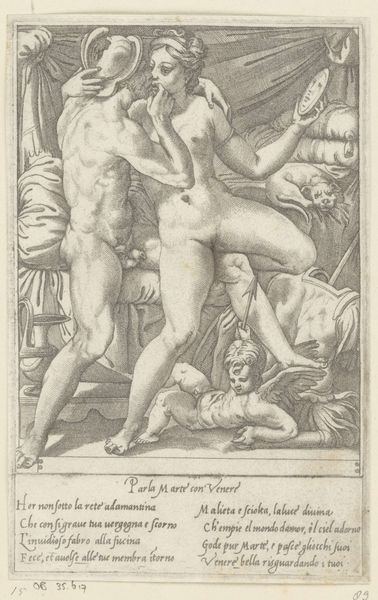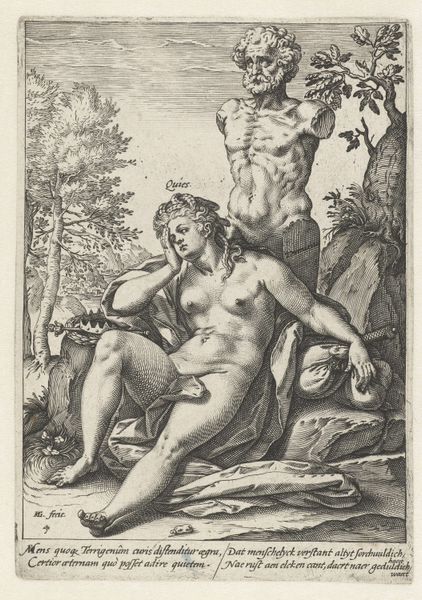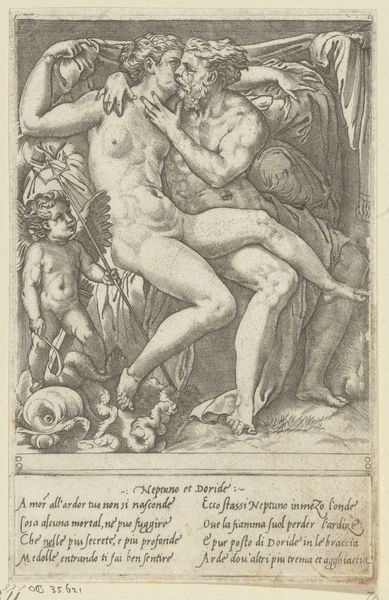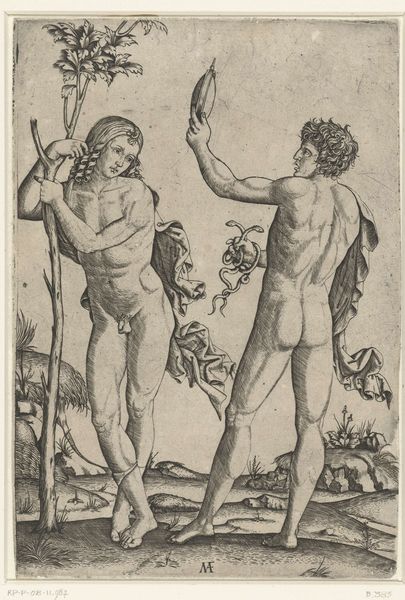
print, engraving
#
pencil drawn
# print
#
landscape
#
figuration
#
portrait drawing
#
genre-painting
#
history-painting
#
italian-renaissance
#
engraving
Dimensions: height 178 mm, width 135 mm
Copyright: Rijks Museum: Open Domain
Curator: Look at the textures, so exquisitely rendered! This is Marcantonio Raimondi's "Silenus Supported by a Young Bacchus," dating back to 1520-1525, currently residing at the Rijksmuseum. What jumps out at you? Editor: The obvious thing is how loaded this feels, no? I mean drunk... but really also visually overloaded! There’s so much cross-hatching. That density and Raimondi's stark, unwavering commitment to rendering classical subjects using what looks to be an engraving process makes my palms itch to touch those labor marks on the surface. Curator: There's a tender support amidst the chaos. See how Bacchus steadies the inebriated Silenus, the mentor, the sage? Their stumble feels deeply human, a brush with frailty against the backdrop of their deity. To be honest, it feels incredibly familiar. Editor: Indeed. And yet, think of the labor! Each of those lines in the engraving meticulously placed, controlled by muscle. A barrel there beside Bacchus reminds of a place for aging wine; everything so intricately constructed—this tableau represents something much bigger than pure intoxication: resources, commodities, tools… even that wine has to come from some grapes that must come from somewhere! Curator: I wonder if there's a sliver of mischievousness in that. Raimondi presenting high society’s darlings collapsing not necessarily just as mortal, but fallible. There is definitely something there regarding classical narratives and satire... Editor: Perhaps a jab at the expense and toil, the many hours spent extracting metal from a mountain that end up serving a fleeting indulgence for elites! What this really makes me ponder, if that is the right word, is who owned it, or how it might be exchanged within wealthy European circles! Curator: So well observed, what begins as Dionysian play can't help but tumble into an understanding of real economic structures of society at the time. What seemed as playful narrative also becomes part of tangible world practices, whether he liked it or not. Editor: And vice-versa, to your point: maybe we are able to feel tenderness only as an expression made from an exploitative society! Curator: A fascinating interplay indeed – how process shapes not just perception, but also reality, then perception once more!
Comments
No comments
Be the first to comment and join the conversation on the ultimate creative platform.
